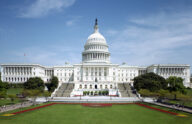What next for President Trump’s reconsideration of national monuments?
Yesterday was the deadline for public comments on the Department of Interior’s recommendation to the President about what to do about the 27 large national monuments established since the Clinton administration. Reflecting the significant impacts of monument designations, there are sure to have been 10s of thousands of comments submitted. Now the Administration’s hard work begins—deciding just what to do.
The primary question is what, if anything, the President can do about existing monuments. PLF got that debate started months ago with an AEI paper coauthored by our colleague Todd Gaziano and PLF Board Member, Professor John Yoo. That paper explains that there is a strong presumption that a government official can reconsider a prior action, unless a statute explicitly indicates otherwise. There is no such indication in the Antiquities Act, so President’s are free to revoke existing monuments or substantially change their boundaries—as numerous Presidents have done since the early days after the statute.
Several law professors responded with a law review article making the bold claim that the Antiquities Act silently forbids the President from reconsidering past monuments, which would make this statute unique among federal laws. The article claims that limitation is implied by several other statutes and a snippet of legislative history written 60 years after the Antiquities Act was enacted.
 Continuing the debate, we responded to the article on this blog and in PLF’s comment on Bear’s Ears (which painstakingly responded to the article’s argument). The problems with the argument are legion: the other laws don’t say what the article claims they do, the legislative history is ambiguous, it is directly contradicted by the Federal Land Policy Management Act (the statute it discusses), and it sheds no light on what congressmen were thinking 60 years earlier when they enacted the Antiquities Act. Suffice it to say, the law is heavily against this interpretation, absent very powerful evidence to support it.
Continuing the debate, we responded to the article on this blog and in PLF’s comment on Bear’s Ears (which painstakingly responded to the article’s argument). The problems with the argument are legion: the other laws don’t say what the article claims they do, the legislative history is ambiguous, it is directly contradicted by the Federal Land Policy Management Act (the statute it discusses), and it sheds no light on what congressmen were thinking 60 years earlier when they enacted the Antiquities Act. Suffice it to say, the law is heavily against this interpretation, absent very powerful evidence to support it.
Last week, the article’s authors, joined by 117 of their friends in the environmental law professoriate, filed their own comment. The law professors’ comment does not acknowledge the substantial criticisms of the article, much less attempt to answer them. Content to merely regurgitate the debunked arguments, the comment appears to concede that the debate is over.
But the President’s power to reconsider existing monuments is just the beginning. Next, the President must decide what to do with each. Some may be revoked, including the illegal Northeast Canyons and Seamounts Marine National Monument (as explained in our comment on that monument and a comment by 17 congressmen from the Western Caucus that quotes PLF extensively).
 Others may be redrawn, as Secretary Zinke has suggested for Bears Ears. Many uncontroversial ones will remain unchanged.
Others may be redrawn, as Secretary Zinke has suggested for Bears Ears. Many uncontroversial ones will remain unchanged.
But others may require some creativity. Monument designations typically eschew balancing competing interests in favor of environmental conservation—hence all the conflict. The only way to reduce that conflict is to find other, more flexible ways to protect the environmental and other values of these lands while also accommodating other interests, like the needs of local communities.




